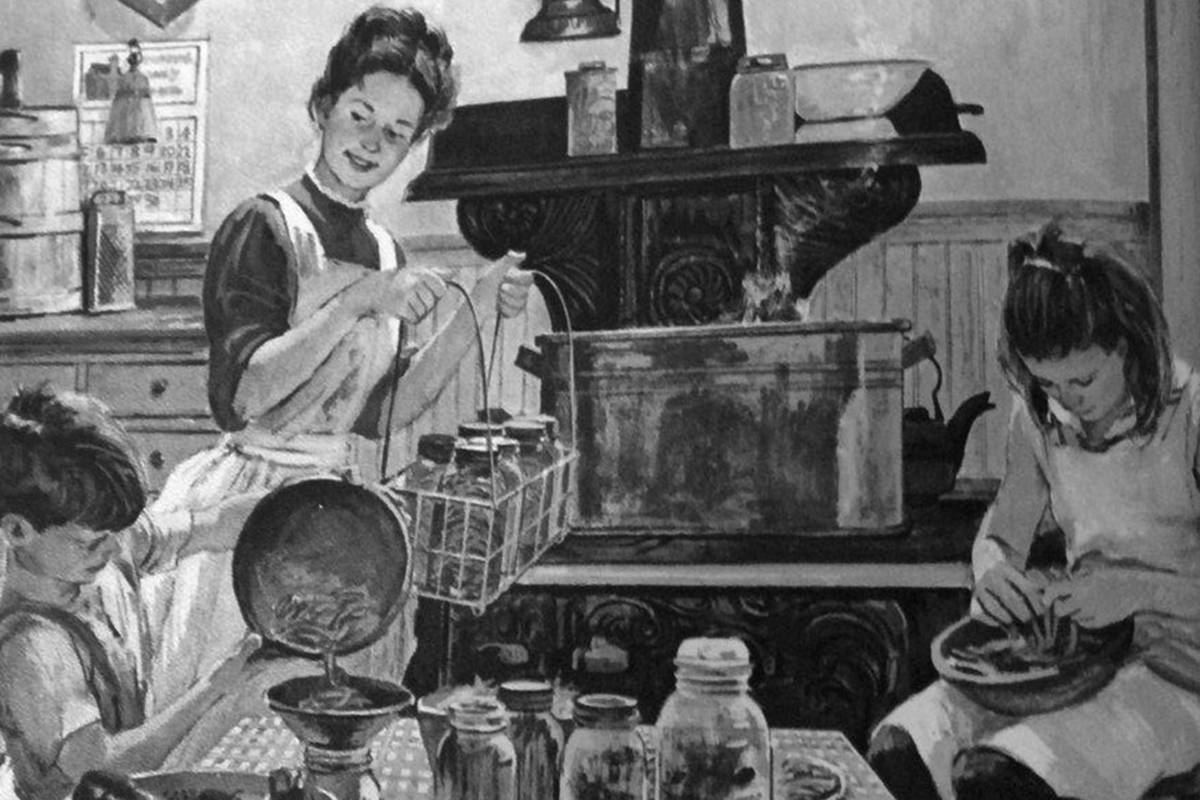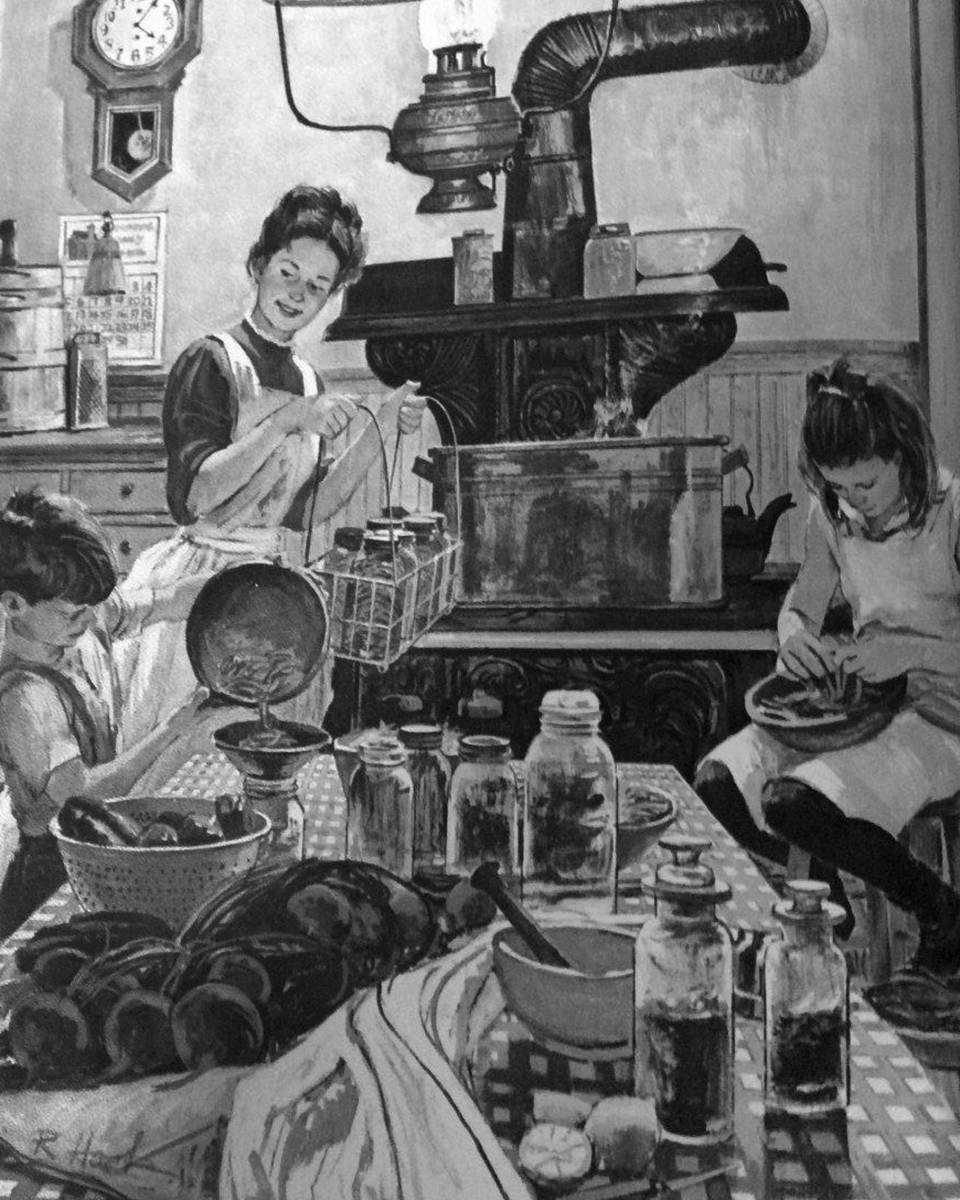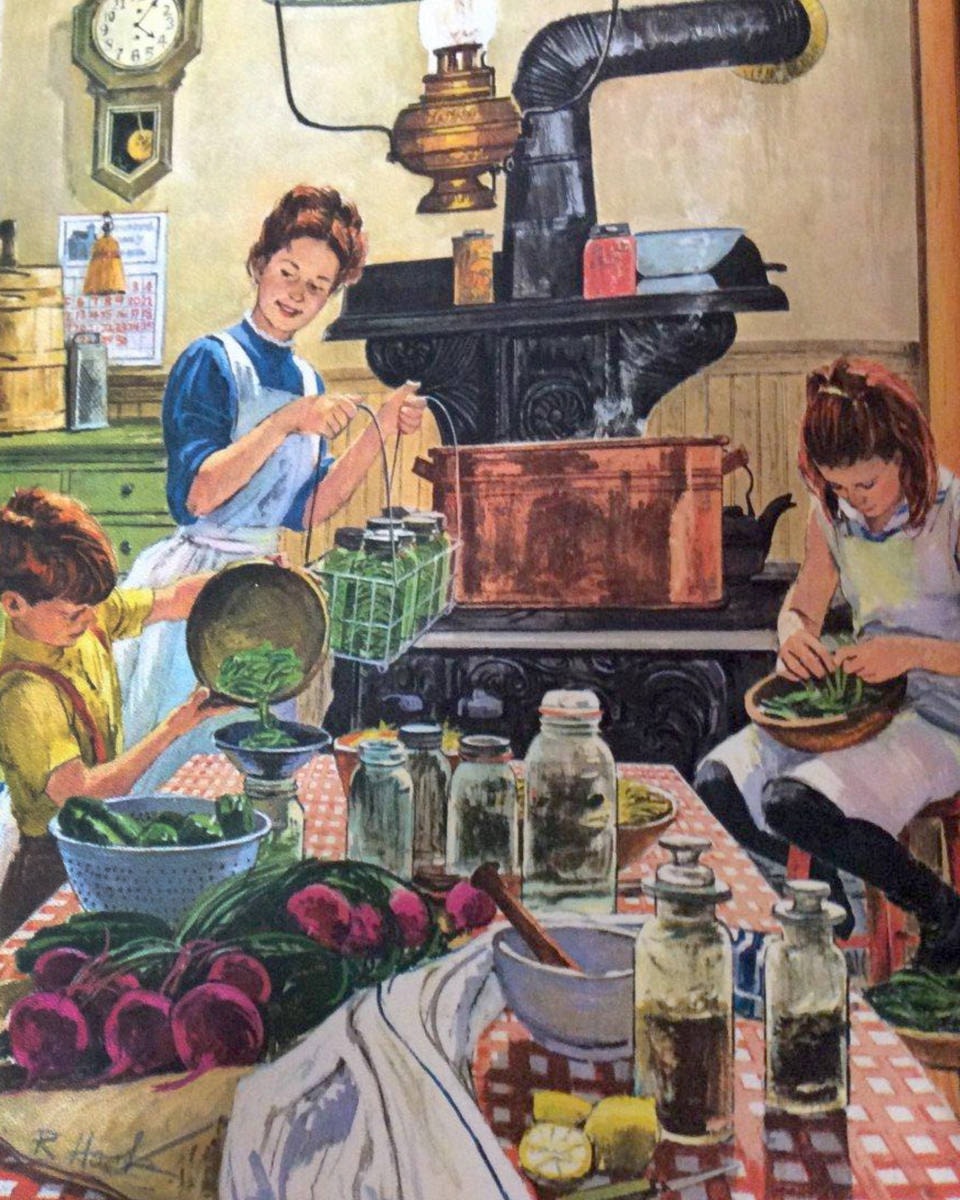Among the fondest ‘growing up’ childhood memories for so many of us were from hanging around in the kitchen at this time of the year, savouring the fabulous smells, while helping out and hoping that our mother would toss us a tasty sample of all the massive piles of fruits and vegetables that she was expertly and meticulously preparing for canning.
This traditional art of the preservation of nature’s finest harvest and magic has taken place for many generations through countless decades of late summers, and once the stacks of glass jars were filled and the lids had popped, they would be carefully stored away in the basement closet or cold room until appearing again to bless our tables for countless year-round family occasions to the total delight and joy of everyone.
Our history books tell us that the delicate art of canning likely started way back in the late 18th century when the diminutive French Emperor Napoleon Bonaparte actually offered a prize of 12,000 francs to whoever could develop a reliable method of food preservation that would feed the thousands of soldiers who fought in many long and distant wars throughout the world. Whatever came about, it worked, and decades of brave armed forces personnel during the rugged first, second and other World Wars would thankfully get to enjoy some well-deserved meals and camaraderie together along with their c-rations of calorie packed cans of bully beef, meat and beans, stew, spaghetti, ham and eggs, potatoes, chicken, veggies, fruit and all sorts of other treats, all to be shared in the mess halls and the trenches along with their Red Cross and care packages from home. When it was discovered that cans of preserved lentils had remained perfectly fresh when they were opened after 35 years on the shelf, the year round benefits of canning would catch on very quickly in the households of the world with a growing list of delightful edible and unique items and combinations being prepared and put away to be enjoyed on another day.
The early years of kitchen canning
Thanks to the ladies at the Fort Ostell Museum, the Internet and my wife, who still uses her family’s original pressure cooker and lots of old recipe books, I was able to find some interesting information and tips about the colourful history of canning.
• In the open kettle method of canning, the jars and rubbers should be sterilized before the fruit is packed inside and then a silver spoon was inserted between the fruit and the jar to break up the air bubbles. Once the jar has sealed, invert it on the kitchen table to cool and make sure that it does not leak and then store them all away in a cool dark place. One of cardinal rules when preparing large fruits for canning is that they should be cooked until you can easily pierce them with a single straw from your kitchen broom.
• When making jelly and jam, hang a piece of string over the edges of the glass before pouring in the paraffin, which can then be easily removed when it is time to open the jar. To prevent mold in jelly or jam, place circles of tissue paper dipped in vinegar on the top of the jar before sealing.
• Add two tablespoons of vinegar when canning strawberries, which will help retain their bright red color. To make your jelly clearer and attractive looking, strain the fruit and juice through a flour sifter. To keep your dill pickles crisp just add a teaspoon of alum during the canning process, which will also keep them from shriveling. Washing strawberries and others thoroughly before stemming them will assure no waste and will also keep them firm.
• Use only ‘sack’ salt for pickles and kraut because the other variety has been treated and will soften, discolour and give an unpleasant taste to your finished product. Do not peel pears for canning, just scald them as you do tomatoes and their little skins will slip off. When canning your tomatoes, put onions and peppers in with them, which will go great with rice or macaroni and is all ready to use.
• The newest preserving method coming out of the agriculture colleges is that if ladies are interested in acquiring ‘extra-special’ preserves, they should freeze the fresh fruit in season and then make them into preserves as they need to.
The extra perks of family canning
These yearly canning sessions can encourage a great year-round ‘family affair’, as everyone can work together going all the way back to planting, tending to and harvesting their big and bountiful gardens that will later supply the goodies for all those jars. Another neat treat is going out together on a picnic to pick the wild fruit when it is ripe as well as helping mother in the kitchen by shelling peas and all sorts of other chores when the big week arrives. It is also a whole lot of fun to browse through the Farmer’s Markets, the U-pick-gardens and the local stores to select the best and freshest products for your cooking and canning adventure. Then of course everyone can plan and look forward to those very special occasions when they can gather together around the big dining room table and sample ‘the fruits’ of their hot but happy summer labours in the kitchen.


